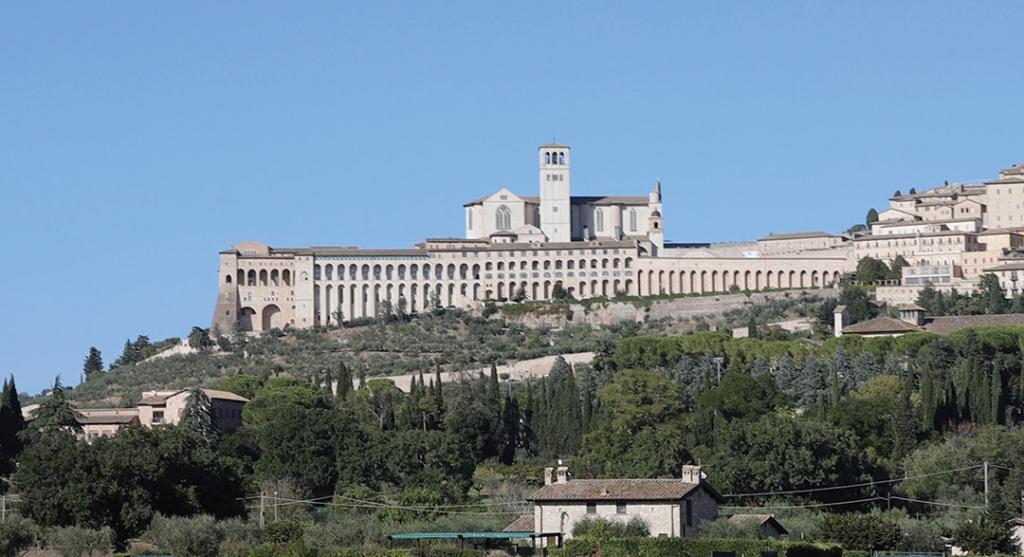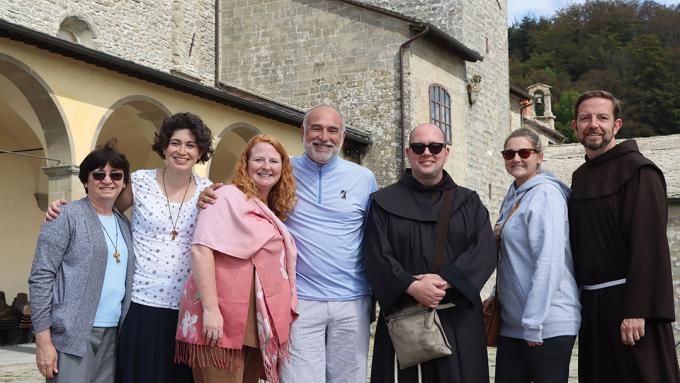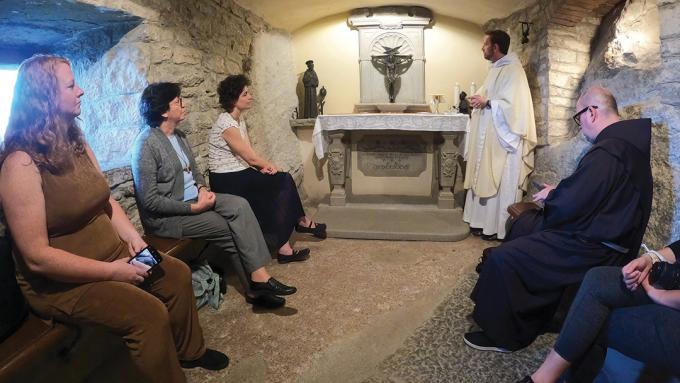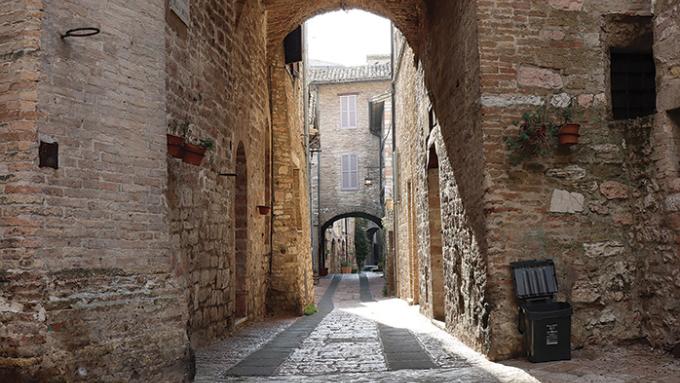Pilgrimages to Assisi and Rome allow Alvernia faculty, staff and students to explore the university's genesis
By Jon Fassnacht
The roots of Alvernia University stretch back centuries and across continents.
Though founded in 1958 by the Bernardine Franciscan Sisters, it has its genesis in 13th century Italy, where Saint Francis of Assisi, the university’s Patron Saint, walked the streets spreading the Gospel.
One of only 24 Franciscan institutions in the United States, Alvernia reconnects with its roots through its Assisi Pilgrimage program, which offers 10-day journeys through Assisi and Rome. Faculty, staff, and students can traverse the paths walked by Francis and Saint Clare of Assisi, one of his first followers, founder of the Order of Poor Ladies and the first woman to write a set of monastic guidelines.
“It drives home how and why we are a mission-focused institution,” said Jamie Caporizo, Alvernia’s Senior Director of Mission and Ministry. “Going to these places, seeing where Francis and Clare lived, and to know the paths that they walked and to see the lengths that they went to minister to poor people, it just puts it in such a real perspective when you’re walking in their footsteps.”
"If you want to get a deep understanding of our values, and a deep understanding of where the Franciscan nature of service comes from, there’s no substitute for going to Assisi." — Alvernia President John R. Loyack
The pilgrimages began in 2012, with the first pilgrims composed of two staff members and one faculty member, according to Sister Roberta McKelvie, OSF. Students started making the trip a few years later.
Pilgrimage stops en route to Assisi include Greccio, where, as Saint Bonaventure writes, Francis constructed the first nativity scene and witnessed the miracle of the event; the childhood homes and basilicas of Francis and Clare, including the jail cell where Francis was imprisoned for giving away his father’s wealth; and the ancient cathedral of San Rufino where Francis and Clare were baptized. Pilgrims also journey to Rome to experience the Vatican, the Pantheon, the Roman Forum, and other sacred sites and monuments. With each step of the experience comes a new story, a life lesson, a moment for spiritual reflection and a communal moment with fellow pilgrims.



